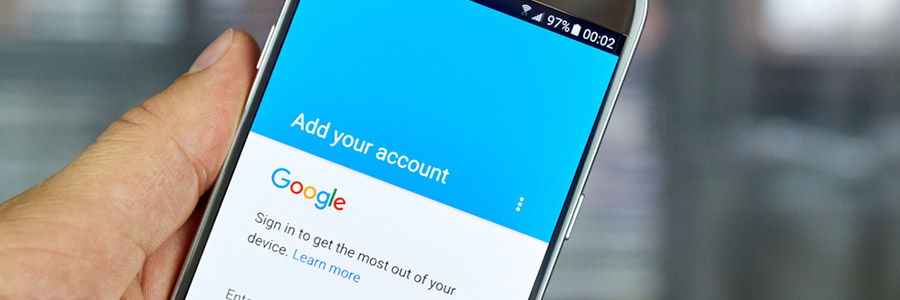 WannaCry is one of the few malware campaigns to become a household name. It’s educated countless people on the reality of ransomware and the vulnerability of their data. If you’re still worried about whether you’re at risk, we’ve collected everything you need to know right here.
WannaCry is one of the few malware campaigns to become a household name. It’s educated countless people on the reality of ransomware and the vulnerability of their data. If you’re still worried about whether you’re at risk, we’ve collected everything you need to know right here.
Ransomware review
Ransomware is a specific type of malware program that either encrypts or steals valuable data and threatens to erase it or release it publicly unless a ransom is paid. We’ve been writing about this terrifying threat for years, but the true genesis of ransomware dates all the way back to 1989.
This form of digital extortion has enjoyed peaks and troughs in popularity since then, but never has it been as dangerous as it is now. In 2015, the FBI reported a huge spike in the popularity of ransomware, and healthcare providers became common targets because of the private and time-sensitive nature of their hosted data.
The trend got even worse, and by the end of 2016 ransomware had become a $1 billion-a-year industry.
The WannaCry ransomware
Although the vast majority of ransomware programs rely on convincing users to click compromised links in emails, the WannaCry version seems to have spread via more technical security gaps. It’s still too early to be sure, but the security experts at Malwarebytes Labs believe that the reports of WannaCry being transmitted through phishing emails is simply a matter of confusion. Thousands of other ransomware versions are spread through spam email every day and distinguishing them can be difficult.
By combining a Windows vulnerability recently leaked from the National Security Agency’s cyber arsenal and some simple programming to hunt down servers that interact with public networks, WannaCry spread itself further than any malware campaign has in the last 15 years.
Despite infecting more than 200,000 computers in at least 150 countries, the cyberattackers have only made a fraction of what you would expect. Victims must pay the ransom in Bitcoins, a totally untraceable currency traded online. Inherent to the Bitcoin platform is a public ledger, meaning anyone can see that WannaCry’s coffers have collected a measly 1% of its victims payments.
How to protect yourself for what comes next
Part of the reason this ransomware failed to scare users into paying up is because it was so poorly made. Within a day of its release, the self-propagating portion of its programming was brought to a halt by an individual unsure of why it included a 42-character URL that led to an unregistered domain. Once he registered the web address for himself, WannaCry stopped spreading.
Unfortunately, that doesn’t help the thousands that were already infected. And it definitely doesn’t give you an excuse to ignore what cybersecurity experts are saying, “This is only the beginning.” WannaCry was so poorly written, it’s amazing it made it as far as it did. And considering it would’ve made hundreds of millions of dollars if it was created by more capable programmers, your organization needs to prepare for the next global cyberattack.
Every single day it should be your goal to complete the following:
- Thorough reviews of reports from basic perimeter security solutions. Antivirus software, hardware firewalls, and intrusion prevention systems log hundreds of amateur attempts on your network security every day; critical vulnerabilities can be gleaned from these documents.
- Check for updates and security patches for every single piece of software in your office, from accounting apps to operating systems. Computers with the latest updates from Microsoft were totally safe from WannaCry, which should be motivation to never again click “Remind me later.”
- Social engineering and phishing may not have been factors this time around, but training employees to recognize suspicious links is a surefire strategy for avoiding the thousands of other malware strains that threaten your business.
Revisiting these strategies every single day may seem a bit much, but we’ve been in the industry long enough to know that it takes only one mistake to bring your operations to a halt. For daily monitoring and support, plus industry-leading cybersecurity advice, call us today.



 The WannaCry ransomware, a type of malware that encrypts a victim’s files and extorts them for money, has already affected thousands of machines worldwide. Unfortunately, the success of this attack is just the beginning. According to security researchers, other hackers will probably develop stronger WannaCry variants in the coming months. And if you don’t want your business to become a victim of these attacks, you must take the following precautions.
The WannaCry ransomware, a type of malware that encrypts a victim’s files and extorts them for money, has already affected thousands of machines worldwide. Unfortunately, the success of this attack is just the beginning. According to security researchers, other hackers will probably develop stronger WannaCry variants in the coming months. And if you don’t want your business to become a victim of these attacks, you must take the following precautions.
 If employee training and education isn’t an integral part of your cybersecurity strategy, a recent scam might force you to reconsider. Instead of relying on complicated programming code to steal and destroy data, hackers are increasingly relying on human errors to get the job done. Even well-trained users are falling for the most recent ploy, take a look.
If employee training and education isn’t an integral part of your cybersecurity strategy, a recent scam might force you to reconsider. Instead of relying on complicated programming code to steal and destroy data, hackers are increasingly relying on human errors to get the job done. Even well-trained users are falling for the most recent ploy, take a look.
 In today’s competitive business environment, SMBs are constantly finding new ways to outdo one another. Recently, social media and content marketing strategies have become increasingly popular. But because many of your competitors are utilizing the same platforms as you are, it’s essential for you to find new methods to make your business stand out. These tips might help:
In today’s competitive business environment, SMBs are constantly finding new ways to outdo one another. Recently, social media and content marketing strategies have become increasingly popular. But because many of your competitors are utilizing the same platforms as you are, it’s essential for you to find new methods to make your business stand out. These tips might help:
 We are taught never to judge a book by its cover. But in this superficial age, looks are everything, especially for websites. Your website is a customer’s first impression of your business, and if your site has poor graphics, illegible content, and other website no-no’s, that could end all chances of establishing a relationship and driving revenue. Go through these key indicators so you don’t end up in such a situation:
We are taught never to judge a book by its cover. But in this superficial age, looks are everything, especially for websites. Your website is a customer’s first impression of your business, and if your site has poor graphics, illegible content, and other website no-no’s, that could end all chances of establishing a relationship and driving revenue. Go through these key indicators so you don’t end up in such a situation: